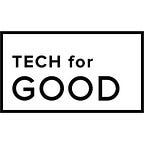Meet the UNICEF wearables finalists series: Telescrypts
(2015)
By: Cat Cochrane
This summer Unicef set the challenge of designing wearable and sensor technology that serves people in resource constrained environments. In the run up to the announcement of the winners on 12th November, we’re proud to cover the teams and their prototype wearables, each aiming to make great impact in the fields of health, child abuse prevention, clean water safety and much more.
In the fourth of our series, we interviewed the team behind teleScrypts, a device which seeks to solve the challenge of providing healthcare workers with advanced healthcare technology in low resource communities at a low cost.
Telescrypts
Telescrypts on paper is a large scale and wide-reaching prototype plan due to its global-level ambitions. Is honing these ambitions into a wearable device a challenge in itself?
Large scale impact stems from the drive to make a complex problem simple, in our case it is delivering healthcare to low resource communities. Of course many difficulties arise with much more complications from fulfilling the distribution model than developing the developing wearable and technology. Our innovation has become the delivery of the entire solution and not just the mobile application or wearable device.
We are proud to have a multidisciplinary team and multinational team, as well as attracting industry leading mentors and partnerships to make our goal attainable. Understanding the entire system and developing with our user has allowed us to reach each milestone rapidly due to a unique and strong team dynamic and the vision of creating something to truly impact people’s lives. Through solving the whole problem and setting well planned goals building a wearable is much more feasible to deliver even with the challenges of a large vision.
The team clearly has different skills to bring to the prototype table. Can you tell us a bit about those skills and experiences required to create teleScrypts.
With years of understanding global distribution, healthcare delivery, medical device design, and mobile application development has allowed our multinational team came together to build a unique and global solution. These international experiences as well as technical experiences have allowed us to pilot our product in a short time period. By developing with our user, with the last hunter gatherer’s in Sub-Saharan Africa, we face some of the most extreme obstacles and continue to learn and adapt from the constantly changing environment.
What has been the reaction from medical facilitators and front line staff in areas you are aiming to reach? Has the traction encouraged your work or challenged it?
Our team has had communications from medical facilitators and front line staff before we even knew we wanted to solve this problem. Therefore we had a diverse population where we could test our key features for the product and scale appropriately along our whole development. We have received both overwhelming positive response as well as people who don’t think we should use technology in low-resource communities. We trust in our users and the data being collected, allowing us to utilize infrastructure in place to deliver healthcare technology. Our traction has been what has driven our work, with large scale institutions demanding usage now in over 47 countries.
The end-users and benefactors of teleScrypts could reap huge impact in their lives. Have you co-designed the prototype with their input? How important is this to the project?
The user is the most valuable part of our venture. They provide the insight that we need to build the best solution. If we can’t add value to what they are doing, we are not able to truly provide the entire health solution to them. Our users have driven the innovation of our product to provide the Healthcare worker and their interaction with the patient special. One where they can utilize the information taken and provide a care to communities that did not have it previously. Telescrypts is making this as simple as possible based on our users input to shape vision.
What impact do you project the prototype having in five years time should it be the Unicef Wearables winner?
Just by being in the Unicef Wearables competition we have learned a tremendous amount from leading experts to create a valuable solution and test it with 5000 patients. From our pilot program and letters of intent we project to provide 10 million people our technology in East Africa alone. Being the Unicef Wearables winner will increase our ability to scale quicker and provide our technology to a greater audience.
